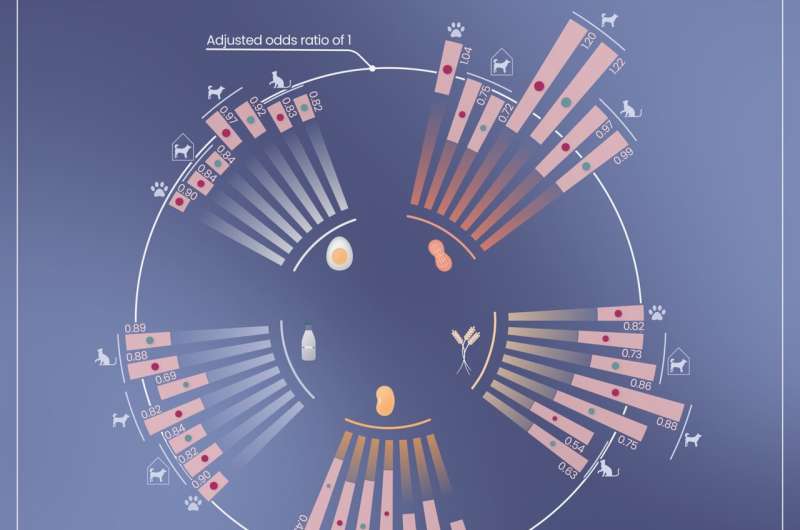This article has been reviewed according to Science X's editorial process and policies. Editors have highlighted the following attributes while ensuring the content's credibility:
fact-checked
peer-reviewed publication
proofread
Living with pet cats or dogs is associated with fewer food allergies in young children

In an analysis of more than 65,000 infants from Japan, children exposed to pet cats or indoor dogs during fetal development or early infancy tended to have fewer food allergies compared to other children, according to a study published March 29, 2023, in the open-access journal PLOS ONE by Hisao Okabe from the Fukushima Regional Center for the Japan Environment and Children's Study, Japan, and colleagues.
Across some high-income countries, more than one in ten children are diagnosed with food allergies, and the incidence of food allergies in children continues to rise. Previous research has suggested a potential link between dog or farm animal exposure in pregnancy and early childhood and the reduction of food allergies.
In this study, Okabe and colleagues used data from the Japan Environment and Children's Study (a nationwide, prospective birth cohort study) to study 66,215 children for whom data on exposure to various pets and food allergies were available. About 22% were exposed to pets during the fetal period (most commonly indoor dogs and cats).
Among children exposed to indoor dogs and cats, there was a significantly reduced incidence of food allergies, though there was no significant difference for children in households with outdoor dogs. Children exposed to indoor dogs were significantly less likely to experience egg, milk, and nut allergies specifically; children exposed to cats were significantly less likely to have egg, wheat, and soybean allergies. Perhaps surprisingly, children exposed to hamsters (0.9% of the total group studied) had significantly greater incidence of nut allergies.
The data used here were self-reported (supplemented by medical record data gathered during the first trimester of pregnancy, at delivery, and at the one-month check-up), so relies on the accurate recall of participants. Additionally, this study cannot determine if the link between pet exposure and food allergy incidence is causative. Still, the authors suggest that these results can help guide future research into the mechanisms behind childhood food allergies.
More information: Associations between fetal or infancy pet exposure and food allergies: The Japan Environment and Children's Study, PLoS ONE (2023). DOI: 10.1371/journal.pone.0282725

















